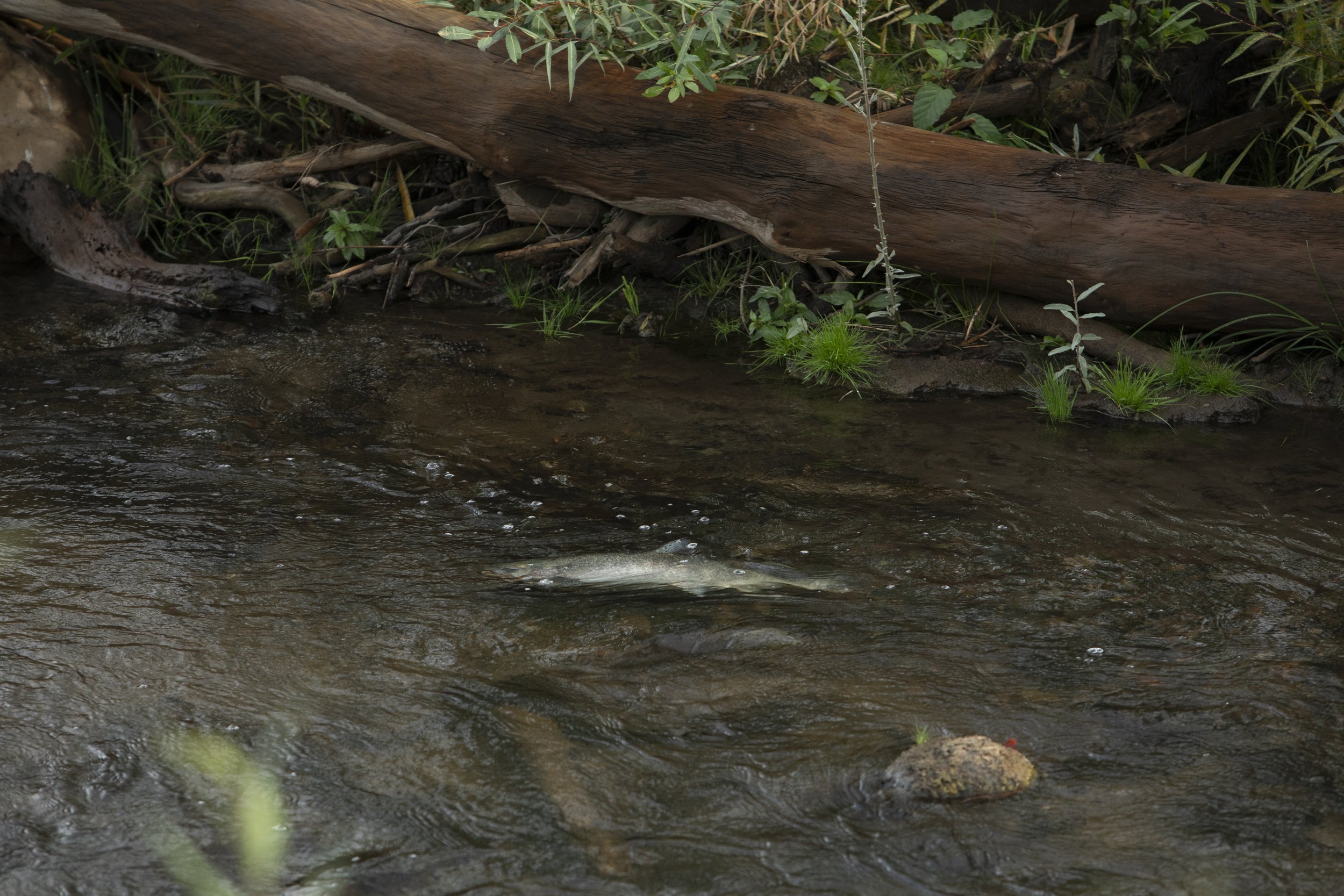What did the fish say when it hit a wall?
On the Oregon side of the Klamath River Basin — a very large watershed that spans the California-Oregon border — salmon have not been seen for over 100 years. Until this year!
The last bits of dam were removed from the river on October 2, and on October 3 at 10:06 pm, sonar equipment set up in the river to monitor returning fish had recorded the first Chinook salmon moving upstream above the site of the former dams for the first time in 100 years.
Since then, multiple Tribes, nonprofits, and agencies monitoring salmon in the Klamath Basin have recorded hundreds of salmon spawning in multiple creeks above the old dam sites.
Check out these photos and video taken in October 2024 showing spawning Chinook in several creeks above the dam sites.













Photos by Matt Mais/Yurok Tribe, and Katie Falkenberg/Swiftwater Films. All rights reserved.
Video courtesy of the Yurok Tribe. All rights reserved.
On the Klamath, it made sense to remove these four outdated hydropower dams because they had become incredibly expensive to operate, the dam owner no longer wanted them, and there were frequent salmon die-offs because the river had become so unhealthy. The removal of these four hydropower dams did not impact the Upper Klamath Basin irrigation system.
As the salmon return, now it’s time to ensure the upper basin is ready for them. Learn more about Sustainable Northwest’s decades-long work in Oregon’s Klamath Basin to restore balance for nature, people, and local economies.
And if you’re still wondering what the answer to the question in the headline is … it’s “dam.” When the fish hit a wall, it said, “dam.”
